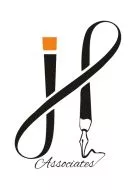INTRODUCTION
In the instant article, we will delve into the intricate tactics employed by unscrupulous entities who are ready to engage in trademark squatting, infringement, and the nefarious hijacking of the rights of the original users and adaptors of a trademark. The present article will explore various ways through which these unscrupulous entities try to obtain a priority over the original users and also discover effective strategies to not only overcome these entities but also take appropriate legal action against them.
The genesis of this article can be traced back to a multitude of cases handled by the author's organization wherein the infringers either asserted themselves to be the originator of the trademark they copied and falsely claimed an earlier date of use which is prior to the actual owner in order to hijack and secure registration. Some even resorted to initiating baseless
legal proceedings against the true owners of the mark, causing unwarranted harassment and legal challenges. Since this article was created out of the practical experiences, the author will keep updating this article to incorporate new issues and their possible solutions.
SQUATTING, A BRIEF OVERVIEW
Squatting is a term generally referred to the action of occupying a right or a property upon which the Squatter (the unscrupulous person squatting) has no right or claim. In reference to Intellectual Property, specifically trademarks, Squatting refers to hijacking or fraudulently filing applications and trying to obtain registration by a third-party who is not actually the originator or actual owner of trademark who is known as the Squatter, whereby the said squatter is aware about the existence of the original mark and tries to take advantage of the absence of the original owner in a particular market or domain. In short, trademark squatting is the practice of securing trademark registration, not with the intend to use it in commerce, but with the intent to profit by selling or leveraging them to the rightful and legitimate owners of those trademarks.
Squatters certainly create huge issues for Multi-National Corporations (MNC) due to the cross-border reputation attained by their various famous marks coupled with the fact that these MNCs cannot be present in every market where the goods bearing their trademark are being sold. Squatters generally keep track of famous trademarks of companies which do not exist in a particular territory, taking advantage of which, the squatter may file trademarks and obtain registration making it extremely hard for the originator to actually assert its rights in that particular country and may have to fight out a legal battle with the squatter costing valuable time, money and resources.
Further, with the passage of time, the squatting techniques have only gotten more complicated and much harder to detect, trace and combat. As a result, trademark owners belonging to the same country, market or domain may also face issues regarding squatting of trademarks either directly i.e. the Squatter filing an application falsely claiming prior date of use than the actual owner or indirectly i.e. Squatter filing frivolous opposition/ rectification proceedings against the pre-existing trademarks of the actual owner merely to harass them.
SQUATTING TECHNIQUES AND THEIR POSSIBLE SOLUTIONS:
1. Cross-Border Squatting: This is perhaps the most well-known form of squatting. This generally affects the Multi-National Companies (MNC) who have products so well-known that transcends geographical boundaries, gaining popularity in countries or territories where the operations of the said MNC does not even currently extend. In such case, an unscrupulous person "Squatter" may apply for and obtain the registration of such trademark of the MNC by exploiting its rights in a particular geographical territory.
Many countries give preference to the principle of 'First Use' over 'Cross Border Reputation' prioritizing the rights of the entity that initially uses the trademark within a specific territory rather than accounting the cross-border reputation. Due to this the MNCs might lose hold of their trademark in the said territory. The MNCs here face the dilemma of whether to engage in a costly and time-consuming legal battle against the squatter or whether to negotiate with the squatter, which is also an expensive option since the negotiation scales are often tipped in favor of the squatter, who is well aware of the MNC's predicament.
A notable case exemplifying this challenge is when Apple Inc. had to pay almost USD 60 Million to a company in China who filed for and subsequently secured the registration for the trademark of 'IPAD' in order to settle the disputes. This case underscores the complex and costly nature of cross-border trademark squatting issues, particularly for renowned MNCs.
Solution
The solution seems pretty simple which is to file trademark applications in every jurisdiction, however, it is significantly more complicated and intricate. An MNC cannot be expected to file trademark applications in every jurisdiction, especially when there are multiple brands, multiple sub-brands and various other complications.
A more pragmatic approach would be to select and give preference those jurisdictions where chances of infringement are higher, and the judicial system is not as favorable. In such jurisdictions where notorious squatters are more likely to be found, trademark applications for the entire portfolio of goods may be filed. It seems more expensive at the outset, however if the possibility of a potential litigation is avoided, then it seems worth it. By focusing on these high-risk areas, the MNC can better safeguard its intellectual property rights and allocate resources more efficiently, addressing the specific regions where trademark squatting is a pressing concern. Further, MNCs can take advantage of various treaties and agreements between jurisdictions which allow for acknowledgement of Cross-border reputation and allow infringement remedies.
2. Indigenous Squatting: Indigenous Squatting (exclusive reference to India) refers to the act of trying to hijack a mark by a Squatter within the same territory in which the original proprietor/ user of a trademark pre-exists. This can be done and prevented in a variety of ways:
2.1. False Declaration of Prior User: The simplest way which is now becoming one of the prime ways in which squatters try to gain or hijack the rights of pre-existing original user/ proprietor is by declaring a false user date. For instance, Mr. A has used a mark 'SAMPLE' since 01/01/2000 in relation to 'Confectionery' falling under Class-30. Now Mr. B who is a squatter observes the great goodwill of Mr. A's mark and to hijack it files an application in the same class for the same goods claiming user as 01/01/1990 (which is false) and files a false affidavit in support of the said claim and fabricates a few invoices in support of his user claim. In such scenario, Mr. B illegally claims the benefit of the doctrine of Prior Use and by making false declaration gets his mark advertised, despite Mr. A's mark being present on the records and in the market. Now if at this juncture if Mr. A and his counsels are not vigilante, Mr. B can easily obtain registration and then create issues for Mr. A. This is not uncommon within the Indian jurisdiction where unscrupulous entities do not fear the legal consequences while making false declarations on oath on an affidavit due to which the originator such as Mr. B herein has to suffer.
Solution
A simple solution, which is often ignored by the litigators and the originators is too voracious engage in the process of investigation of the documents and affirmations made by the squatter. The Hindi Phrase "झूठ के पाँव नहीं होते" which means a Lie has no leg to stand upon is clearly applicable here. During some point of investigation, the originator or their counsel will definitely come across some infirmity with the declaration, affirmation or the forged document filed by the squatter which will play a pivotal role in disproving the user claim of the squatter. During our experience spanning over years facing various squatters, we have found that the following documents/ details are of particular importance and can either make or break the case:
2.1.1. Check for FSSAI Licenses: To handle food or to deal in any kind of food or food related article, FSSAI License is mandatory. In a dispute relating to food article, a squatter can be called upon to submit his FSSAI License which will, in most cases, be enough to disprove his user claim as False/ Forged Invoices can easily be created, however, such government registrations cannot be created at all. Anyhow, the veracity of the said license can also be checked easily through the FOSCOS system developed by the FSSAI Authorities which makes it quite east to search the details of all vendors registered under FSSAI through their website.
2.1.2. Check for GST Registration and GST Compliances: GST Law itself is extremely daunting, complex and hard to navigate through, especially for a squatter who will most likely create bulk documents in a day or two merely for the purpose of submitting the same before the Trade Marks Registry. More often than not a squatter will miss a few of the compliances needed by the GST Authorities such as mentioning incorrect/ non serial invoice numbers, mentioning GST Number prior to applicability of GST Law or prior to the squatter's registration under GST Act, non-mentioning of GST Number on invoices despite having a registration as the GST Act mandates that once registration is obtained, the GST Number is to be mentioned on all relevant business documents, wrong applicability of HSN Codes and Rates of GST which will immediately prove the squatter's claim false, mismatching turnover, checking for E-Invoices, etc. Further, in case of any complications or issues, the originator can easily make a representation to the necessary jurisdictional GST Authorities to cross-check the invoices, turnover details, etc. More often than not, since squatter has fabricated invoices his details will mismatch from the reporting done on the Government's GST Portal and such squatter will not only be liable to be prosecuted for false testimony and placing false, fabricated or forged document before a public authority but also will be liable to be prosecuted under the GST Law.
2.1.3. Check for other Government Registration: Checking the authenticity, date of issuance and veracity of government registrations acts as a potent measure to discredit the assertions made by squatters. A thorough and comprehensive review and examination of government licenses, certifications and registrations such as the Shop Act Registration, Tax Registrations, Import/Export Licenses, Industry-Specific Licenses (Example-Drug License) etc. may be used as an effective tool to outrightly nullify the squatter's frivolous claims.
2.1.4. Check for Same Invoice Numbers across multiple applications: During our practical experiences what we have observed is that when a squatter forges an invoice, he not only uses that invoice in support of particular mark but uses the same invoice with necessary changes in support of other various marks. It would be prudent to check other various trademarks filed by the squatter to know if he has used the same invoices however has merely changed the brand name contained in the invoice. In such case, the user claim of the squatter is easily demolished.
2.1.5. Contradictory Affidavits/ Statements/ Declarations: More often than not a squatter will make multiple attempts to gain the same trademark. During those multiple attempts the squatter will either materially change his statements or submissions or make multiple declarations or affirmations which are not in consonance with each other. These affirmations/ statements/ declarations can easily be cross-referenced to check whether they are consistent or inconsistent. In case of any inconsistency, the original user can claim benefit.
2.1.6. Check the Trademark Portfolio of the Squatter: Checking and analysing the entire trademark portfolio of the squatter is of a great aid. The aforementioned contradictory statements/ declaration/ affirmations can easily be observed and pointed out. Further, the squatters way of thinking can easily be judged by his filings, his behaviour and his submission before the public authority which may place the originator in a substantial advantage.
By meticulously investigating these critical areas, trademark originators can effectively challenge and disprove the user claims of squatters, bolstering their position in disputes and legal proceedings.
2.2. Taking advantage of Naïve people: Trademark squatters often prey on gullible brand owners who may be unfamiliar with the legal processes and prospective avenues for safeguarding their rights vested in their brand. These squatters end up exploiting the actual trademark owner's lack of knowledge by promptly filing trademark applications thereafter gaining registration for well-known trademarks, ultimately obtaining legal rights to a brand that rightfully belongs to the original creator. This success largely stems from the unwariness of the business owners in the market.
Solution
The solution to this problem is indeed straightforward i.e., education. By educating individuals, especially brand owners regarding filing of trademark application with the correct user claim, educating regarding the different recourses such like Opposition, Rectification and Civil suits available to the brand owners etc. Apart from this educating about the importance of IPR protection, mitigating the risks associated with trademark squatting can be curbed. Raising awareness about various IPR laws, registration procedures, and the potential consequences of failing to secure one's brand can empower brand owners to protect their creations effectively.
Education can take various forms, including but not limited to seminars, workshops, online resources, and legal guidance. When brand owners are informed and proactive, they are better equipped to navigate the complex landscape of trademark protection, reducing the likelihood of trademark squatting and preserving the integrity of their brands.
2.3. Cross-Class Trademark Filings: One more way through which trademark squatters get successful in obtaining illicit brand registration is through cross-class filing, which is detrimental to the legitimate brand owners. This strategy involves filing a trademark application for a brand in a class which has certain overlapping, associated or allied components. Let's understand this with the help of some illustrations.
Illustration: A, a brand owner, specializes in selling footwear (class 25), and squatter B files an application for A's brand in class 35, encompassing services related to advertising, business management, and office functions, for the sale of footwear. In this case, the squatter gets successful in malevolently securing the registration of A's mark in an allied class.
Solution
The solution to this issue is twofold. First step is for the brand owners to secure trademark registrations in all classes that are relevant to their brand and products. While this can be a comprehensive strategy, it is not conclusive. A more strategic approach is to implement Intellectual Property (IP) landscaping while securing trademark registrations in relevant classes, which involves a thorough analysis of the trademark landscape in allied classes. By identifying and monitoring trademarks in classes that are closely related to their own, brand owners can proactively address potential infringements or squatting attempts. This approach allows brand owners to take action before squatters can register trademarks in allied classes, preserving the integrity of their brand and reducing the risk of confusion in the marketplace. By adopting these strategies, brand owners can better protect their intellectual property and minimize the impact of cross-class filing by trademark squatters.
ROLE OF TRADEMARK OFFICES IN PREVENTION
Trademark Registries and offices all around the globe can have a pivotal role in combatting trademark squatters and ensure the protection of the rights of scrupulous brand owners. The aimed outcome, though difficult, is achievable with the right efforts from trademark offices all around the world. Comprehensive Examination of Trade Mark Applications including meticulous review of documents, Consideration of global brands during examination process, Accounting the cross border reputation of globally recognized brands, Adhering to international agreements & covenants, taking educational initiatives, improving legal framework and finally taking coercive action against people who file false trademark applications are all some steps which would considerably ensure the eradication of the practice of Trade Marks squatters from the world.
CONCLUSION
In conclusion, trademark squatters pose a significant threat to brand owners and the integrity of the trademark system. The deceptive tactics of such squatters can result in the unlawful acquisition of trademarks that rightfully belong to others. To combat this issue, brand owners must remain vigilant, educate themselves on trademark protection, and strategically navigate the legal landscape. Trademark offices worldwide also play a pivotal role in preventing squatting by upholding rigorous examination standards, offering opposition mechanisms, and enforcing trademark rights. However, a collaborative effort between brand owners, legal professionals, and trademark registries is essential to thwart trademark squatters effectively.
By adopting a proactive stance and leveraging the available legal mechanisms and educational resources, brand owners can safeguard their intellectual property and ensure that their hard-earned trademarks remain their exclusive assets in the marketplace. In this ongoing battle against trademark squatting, awareness, education, and strategic action are the keys to preserving the uniqueness and value of brands in a competitive world.
The content of this article is intended to provide a general guide to the subject matter. Specialist advice should be sought about your specific circumstances.


